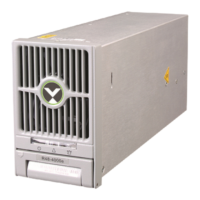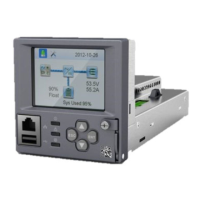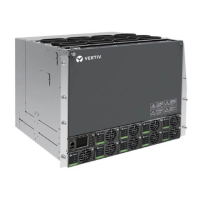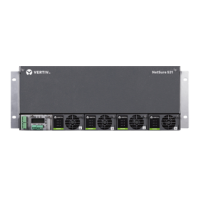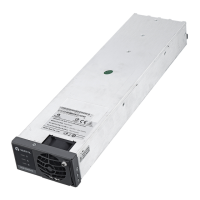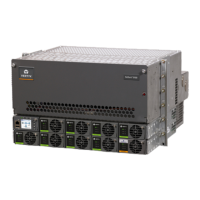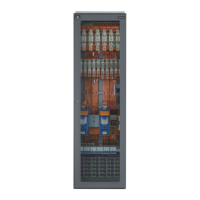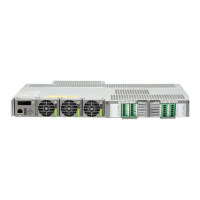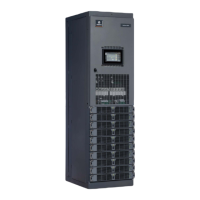NetSure
™
Control Unit (NCU)
User Manual, UM1M830BNA
Spec. No: 1M830BNA, 1M830DNA Code: UM1M830BNA
Model No: M830B, M830D Revision M, May 12, 2017
battery and saves the results in a battery test log. The NCU stores
ten (10) battery discharge tests.
Functional Description:
For manual battery discharge tests as well as for scheduled battery
discharge tests, the following parameters must be set: End Test
Voltage, End Test Time, and End Test Capacity. See Figure 4.
Figure 4. Battery Test Diagram
Battery Discharge Test Sequence:
For a Constant Current Test, the output voltage of the
rectifiers is reduced so that the batteries supply the
preset Constant Current Test Current to the load.
If Constant Current is disabled, then the current being
delivered by the batteries will be dependent on the load.
For a Short Time Test, the output voltage of the rectifiers
is reduced so that only the batteries power the load. If
the batteries fail, the rectifiers power the load.
The battery test continues until one of the following
occurs:
a. The preset End Test Time, see Figure 4, expires. The
battery has passed the test.
b. The battery capacity drops below the preset End
Test Capacity. The battery has passed the test.
c. The battery voltage drops below the preset End Test
Voltage (Vend) (see Figure 4). The battery has not
passed the test and the test is interrupted. A bad
battery alarm is activated.
A battery test alarm is active during a battery discharge
test.
If the battery has not passed the test, a bad battery alarm
is activated.
After the battery discharge test, the output voltage of
the rectifiers increases so that the rectifiers supply the
system and charge the batteries.
NOTE: A procedure for performing a manual battery discharge
test is provided on page 29.
Battery LVD (Low Voltage Disconnect)
To prevent serious damage to the batteries during a commercial
AC power failure, the batteries can be disconnected by voltage or
time control.
The batteries are reconnected automatically when commercial AC
power is restored and a predetermined DC voltage level is reached.
Voltage Controlled Disconnection: When the set voltage
level is reached, the batteries are disconnected.
Time Controlled Disconnection: After the Mains Failure
alarm occurs the batteries will disconnect after the set
time has elapsed.
Battery Capacity Prediction
The NCU can predict battery capacity.
Battery Block and Battery Midpoint Monitoring
The NCU can monitor battery blocks (12 V blocks) or midpoint
battery voltage of battery strings connected to the EIB (Controller
Extended Interface Board) assembly. An alarm is issued when
either battery block voltage or battery midpoint voltage is
abnormal.
Enhanced Battery Monitoring with SM-BRC
When connected to an SM-BRC, the NCU provides enhanced
battery monitoring.
Thermal Runaway Detection and Management
Functional Description:
The system uses several control mechanisms to avoid thermal
runaway.
During a short high rate discharge, the batteries will
normally get hot. The NCU takes this into consideration.
After completion of the discharge duty, the batteries are
recharged with a limited current to avoid heating the
batteries any further.
The temperature of the batteries can be monitored, and
the NCU sets the charge voltage appropriately, as
previously described under “Battery Charge Temperature
Compensation” on page 3.
In addition to battery temperature compensation, if
battery temperature rises above a set temperature limit,
the system stops battery charging completely by
lowering the output voltage to the “BTRM Voltage”
setting. This allows the batteries to cool down. The
system also provides alarm notification of this
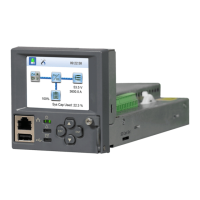
